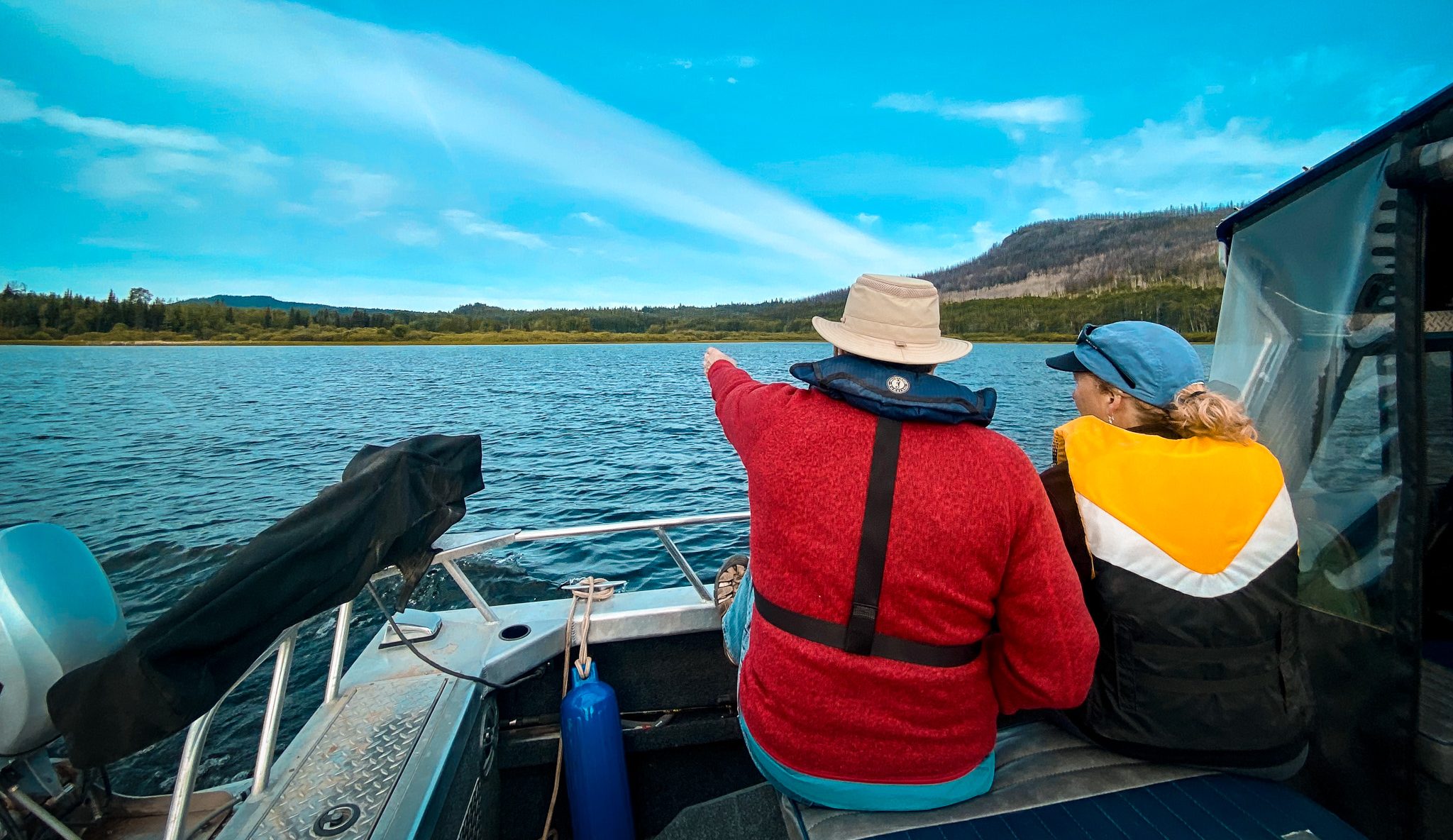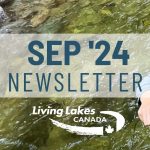Fraser Lake study reveals ‘significant’ loss of natural shoreline
Known for its abundant fishing and recreational opportunities, Fraser Lake, located west of Prince George in the Regional District of Bulkley-Nechako, is home to incredible biodiversity, including endangered Nechako White Sturgeon, spawning Sockeye and Chinook Salmon, and migrating waterfowl. The lake is also a globally significant wintering site for Trumpeter Swans.
In response to concerns that shoreline development was impacting critical fish and wildlife habitat around the lake, a re-survey of Fraser Lake’s foreshore was conducted in 2023 by Living Lakes Canada using a federally-developed monitoring protocol called Foreshore Integrated Management Planning, or FIMP.
Done by boat using GPS and drone assessment, the re-survey provided a comprehensive inventory of the Fraser Lake foreshore, highlighting habitat values and sensitivities, cultural and archaeological significance, as well as the impacts of current foreshore developments. Another goal of the project was to update the data from the original 2011 Foreshore Inventory and Mapping, and document changes along the lake’s foreshore over the past 12 years.
“This re-survey has enabled us to assess the rate of change with respect to habitat loss, development pressures, climate change impacts, and various shoreline alterations,” said Georgia Peck, FIMP Manager with Living Lakes Canada. “Protecting foreshore habitat in Fraser Lake will help conserve the lake’s ecological and cultural values, as well as endangered and at-risk species.”
The lake foreshore is defined as the area along the lake between the low and high water mark, and is extremely valuable economically, culturally and ecologically — around 90 % of lake biodiversity depends on the foreshore at one or all life stages, and Indigenous archaeological and culturally significant sites may also be found there.

Fraser Lake FIMP field reconnaissance in June 2023. LLC Photo
The survey revealed that 35% of the 70.9 kilometres of shoreline is currently disturbed. This figure has increased by 2.6% (~1,859 metres) since the 2011 survey. This means the length of disturbed shoreline has been increasing by 155 m (or 0.2% of the shoreline) per year on average.
“Living Lakes has re-surveyed nine lakes across B.C. since 2020,” Peck said. “While a rate of change of 0.2% may seem small, 155 m of annual shoreline loss on roughly 70 km of shoreline is significant. It is one of the larger rates of loss we have seen in the last 5 years.”
The survey found that recent shoreline development, including areas beyond the Regional District of Bulkley-Nechako’s setbacks and below the lake high water mark, is harming sensitive ecosystems and reducing habitat value along the Fraser Lake shoreline. This was most evident in residential and rural areas. Development pressures include retaining walls, beach clearing activities, docks, buildings and boat launches. Significant impact is also linked to the CN railway line. Currently, 65% of Fraser Lake’s shoreline remains in a natural state.
Sixteen lake-specific, evidence-based recommendations are outlined in the FIMP Fraser Lake report, offering guidance on protecting sensitive habitats around Fraser Lake. With climate change intensifying extreme weather events and natural hazards—including heavy rainfall, storms, flooding, and wildfires—the lake’s ecosystem services, vital to Fraser Lake’s residents, are increasingly at risk. The findings from this FIMP project will also aid local climate adaptation efforts by identifying vulnerable foreshore environments and providing strategies to mitigate these impacts.
The FIMP process recognizes the importance of integrating cultural knowledge and consultation with the Indigenous Peoples who have lived in these areas for countless generations.
“We would like to share our gratitude for Stellat’en First Nation and Nadleh Whut’en First Nation for inputting and sharing their time and perspectives throughout the Fraser Lake FIMP process,” said Peck. “Both Nations participated in portions of the field survey and contributed a high level of report and map review.”
The results of the 2023 Fraser Lake FIMP survey, including reports and maps, can now be found on the Water Hub. The Fraser Lake Foreshore Development Guidelines offer valuable, evidence-based insights on habitat quality and development for government, First Nations, stewardship groups, and property owners.
This project was funded in part by CN Rail, the Province of BC, the Regional District of Bulkley-Nechako, the Cook-Rees Memorial Fund and the Nechako Environment and Water Stewardship Society (NEWSS).
To explore the findings for 35 other lakes surveyed as part of the FIMP program, visit the main FIMP page on the Water Hub. To learn more about the program, visit the project page: https://livinglakescanada.ca/fimp.





